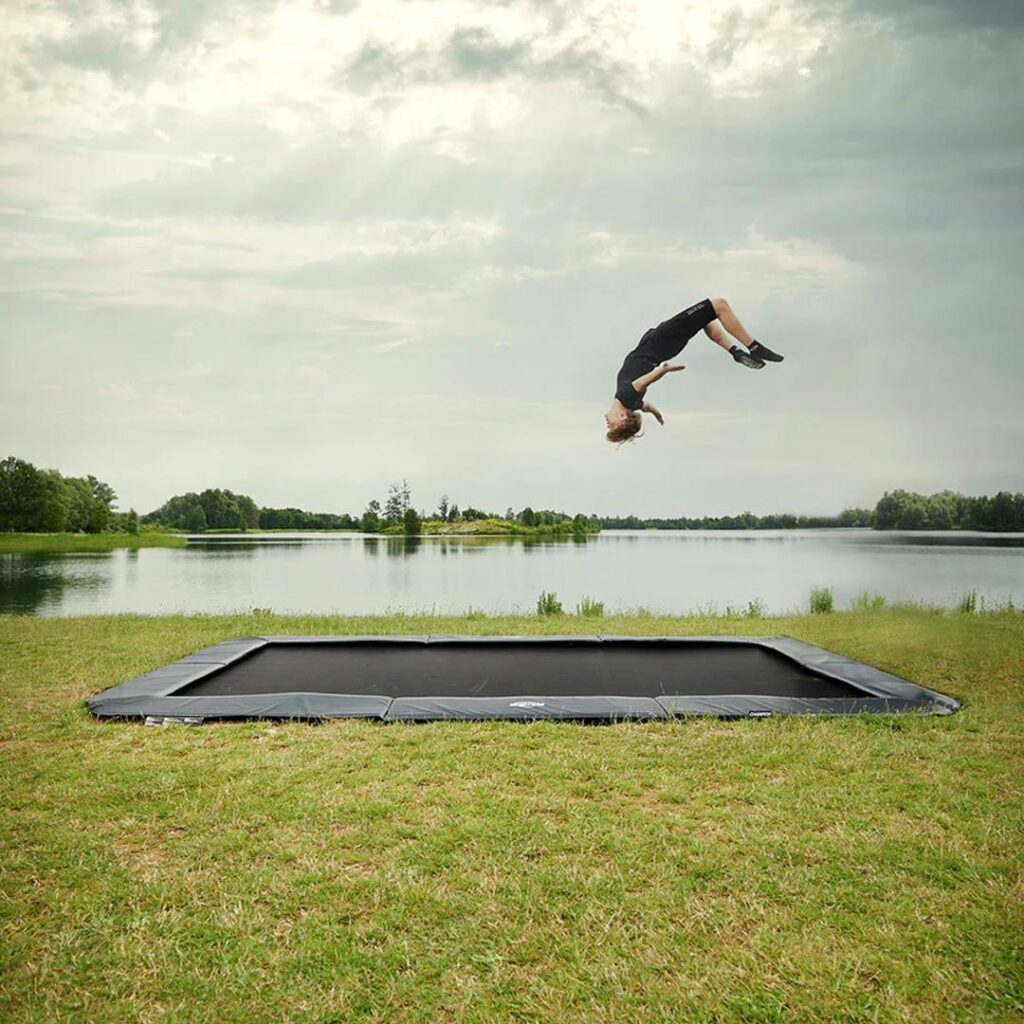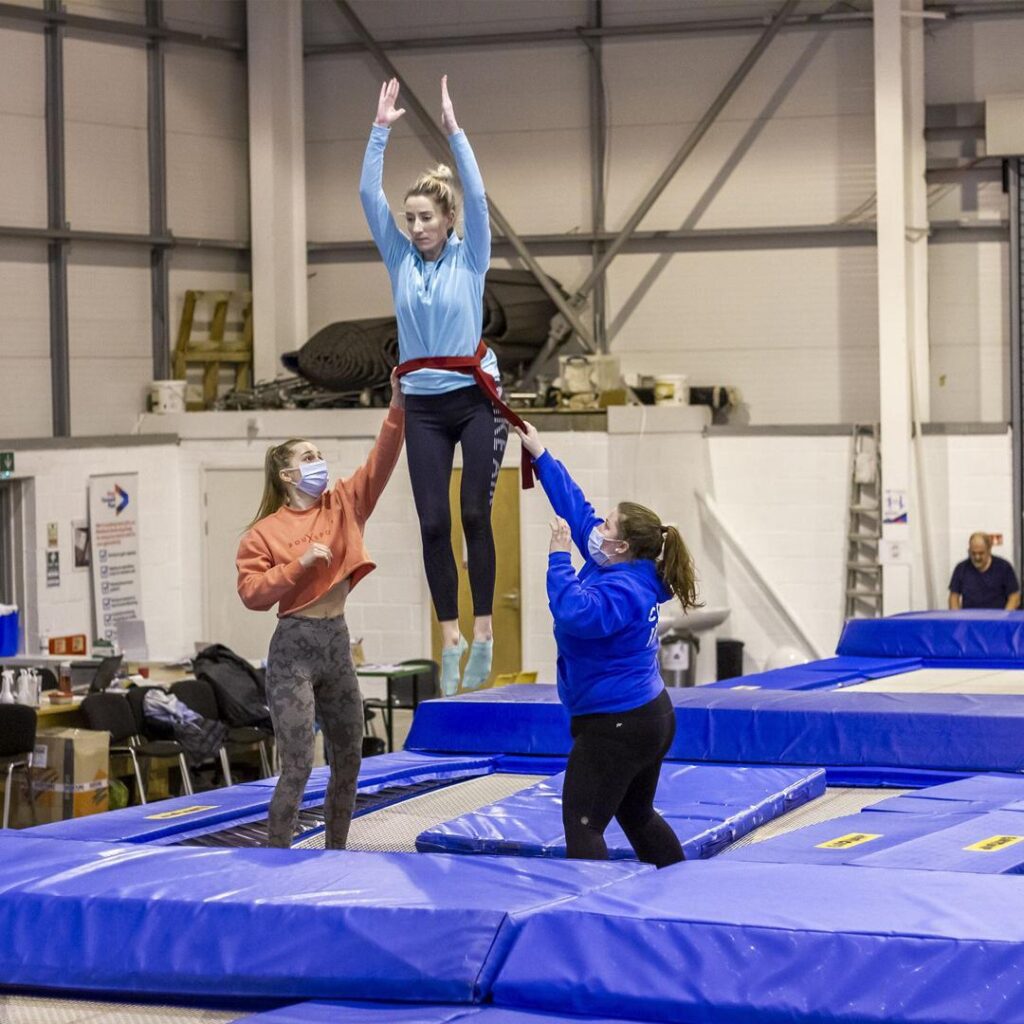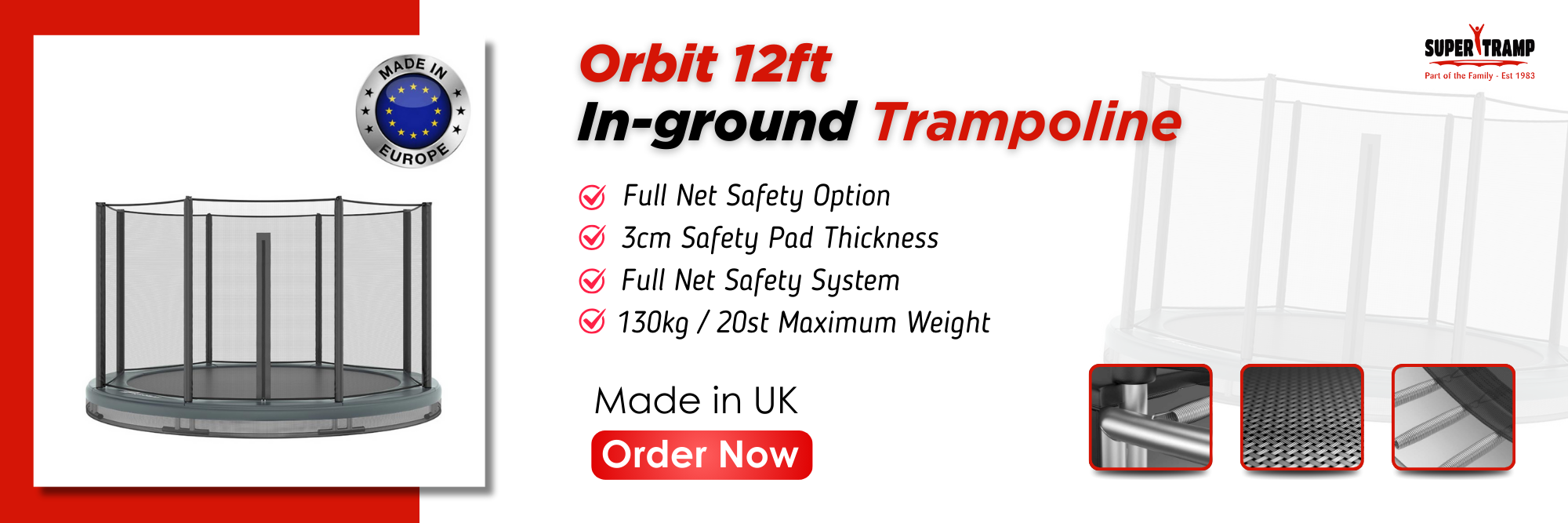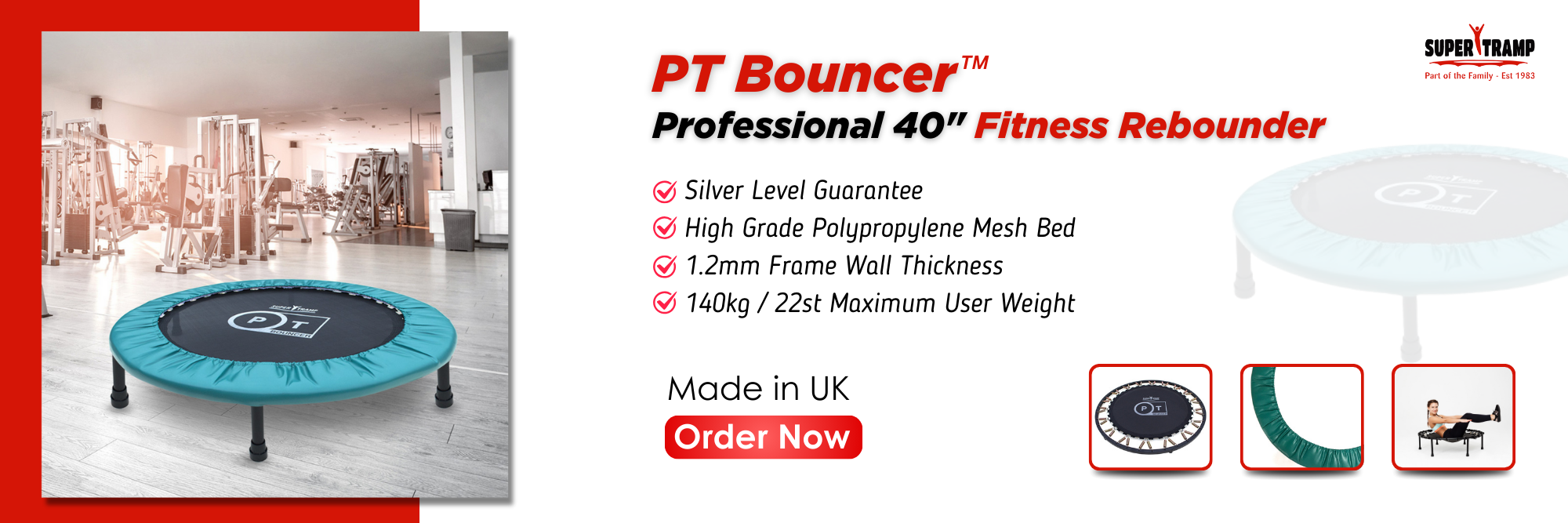Dancers’ elegant motions and smooth leaps are made possible by their strong muscles. Strength training improves stability, stamina, and helps prevent injuries. It is crucial. Although standard techniques such as resistance training and weightlifting are widely used, there is increasing interest in non-traditional equipment that offers exciting outcomes. Enter the trampoline—a fun, dynamic, and surprisingly effective tool catching the eye of dancers everywhere.
Table of Contents
Toggle
Trampolines, once just for garden fun, then entering fitness routines and now it is in dance studios. The idea of bouncing your way to better strength and coordination might sound too good to be true, but the rising interest speaks volumes. This isn’t just a fleeting trend; it’s a potential game-changer for dancers looking to up their game.
So, is a trampoline a good strength training tool for dancers? Let’s explore whether this bouncy equipment can help dancers reach new heights—literally and figuratively!
Understanding Strength Training Needs for Dancers

Dancing demands a unique combination of physical attributes, making strength training essential for anyone serious about their craft. Let’s break down the key elements dancers need to excel and how in-ground trampolines can contribute.
Endurance, Strength, Flexibility, and Coordination
Dancing is more than just outstanding movement; it’s about maintaining that grace for extended amounts of time. It’s important to have endurance. Dancers must execute difficult routines at a high level of energy and form without failing. Strength is equally important. Strong muscles are necessary for powerful leaps, swift twists, and controlled landings. Flexibility is another cornerstone, allowing dancers to achieve a wide range of motion and elegant lines. Coordination ties everything together, enabling dancers to move fluidly and accurately, often in complex sequences.
Crucial Muscle Groups and Types of Strength
Specific muscle groups take centre stage in a dancer’s training regimen. Core strength is foundational, providing stability and balance. Strong legs and glutes are vital for jumps and lifts, while well-developed back muscles support posture and prevent injuries. Arm and shoulder strength come into play for lifts and partnering work.
Traditional Strength Training Methods
Traditional strength training methods remain popular among dancers for good reason. Weight lifting helps build muscle mass and strength. Exercises like squats, lunges, and deadlifts target the lower body, enhancing power and stability. Core exercises, such as planks and Russian twists, fortify the midsection. Flexibility is maintained through regular stretching routines, often incorporating techniques from yoga or Pilates.
Incorporating Trampolines
Fitness Trampolines add a dynamic element to strength training for dancers. Bouncing on a trampoline enhances cardiovascular endurance, allowing dancers to sustain high-intensity routines. The low-impact nature of trampolines reduces stress on joints while building muscle strength, particularly in the legs, glutes, and core. Trampoline exercises improve flexibility through repetitive, controlled movements, and enhance coordination by requiring precise, balanced jumps and landings.
By understanding these physical demands and incorporating targeted strength training with tools like trampolines, dancers can enhance their performance, reduce injury risk, and achieve the strength and grace needed for their art. Using a trampoline offers a range of benefits that can enhance a dancer’s strength training routine.
Benefits of Using a Trampoline

Let’s explore how trampolines contribute to cardiovascular health, muscle engagement, and improved coordination and balance.
Cardiovascular Benefits
Trampoline workouts boost your cardiovascular health through aerobic exercise. Bouncing continuously gets your heart rate up, improving blood circulation and increasing lung capacity. This aerobic activity enhances your stamina, allowing you to sustain high-intensity dance routines with ease. As you bounce, you build endurance, which helps you maintain energy and perform longer without fatigue.
Strength and Muscle Engagement
Rectangular Trampoline exercises engage multiple muscle groups, including the core, legs, and glutes. Each bounce activates your core muscles, stabilising your body and improving your balance. Your legs and glutes get a powerful workout as they propel you into the air and cushion your landings. The low-impact, high-intensity bouncing minimises stress on your joints while maximising muscle engagement. This combination helps you build strength and maintain muscle tone without risking injury.
Coordination and Balance
Bouncing on a trampoline significantly improves your coordination and balance. Each jump requires precise control and coordination, enhancing your ability to execute complex dance movements. The constant adjustment needed to maintain balance on the trampoline strengthens your coordination skills, making dance routines smoother and more fluid.
By incorporating trampoline workouts into your routine, you keep your entire body toned and strong while enjoying a fun and effective way to improve your dance performance.
Dancers are using trampolines in their routines for obvious reasons—they are excellent tools for strength training. Now let’s explore Which dance styles, nevertheless, can you practise on a trampoline?
Dance Forms You Can Practise on a Trampoline

Practising dance forms on a trampoline adds a unique twist to traditional routines, enhancing both technique and fitness. Here are a few dance forms that blend seamlessly with trampoline workouts, making your practice sessions more dynamic and enjoyable.
Ballet
Ballet on a trampoline might sound unconventional, but it offers numerous benefits. Bouncing helps you perfect your jumps and leaps, such as grand jetés and entrechats. The trampoline’s surface encourages higher jumps and softer landings, reducing the impact on your joints while allowing you to focus on form and technique.
Jazz
Jazz dance thrives on energy and expressive movements, making it a perfect match for trampoline practice. The trampoline’s buoyancy enhances your kicks, turns, and leaps, giving them extra height and flair. The dynamic surface helps you develop better control and coordination, crucial for executing quick, sharp jazz moves.
Hip-Hop
Hip-hop’s dynamic and rhythmic style benefits greatly from trampoline workouts. The trampoline allows you to practise high-energy moves like jumps, flips, and spins with reduced impact on your joints. It also adds an element of fun to your practice, encouraging creativity and spontaneity. The constant motion of the trampoline improves your agility and coordination, helping you master intricate footwork and transitions typical in hip-hop routines.
Contemporary
Contemporary dance, known for its fluid and expressive movements, adapts well to trampoline practice. The trampoline’s bounce helps you explore new dimensions of movement, adding height and fluidity to your jumps and rolls. Practising contemporary dance on a trampoline enhances your spatial awareness and balance, enabling you to execute complex choreography with grace and precision.
Acro Dance
Acro Dance, which combines classical dance techniques with acrobatic elements, benefits immensely from trampoline training. The trampoline provides a safe environment to practise flips, aerials, and other acrobatic tricks, reducing the risk of injury. It helps you build the strength and coordination needed to execute these moves seamlessly.
By integrating trampoline practice into these dance forms, you can enhance your technique, strength, and overall performance while enjoying a fun and innovative workout.
Exploring various dance forms that can be practised on a trampoline not only adds a unique twist to your routine but also requires special attention to safety and precautions. Let’s talk about safety and precautions in details:
Safety and Precautions

Ensuring safety is ultimate when integrating trampoline workouts into a dancer’s training routine. Here’s how to minimise risks and maximise benefits:
Potential Risks and Mitigation
Risks can arise from trampoline bouncing if you don’t proceed cautiously. Make sure you perform workouts with good form to reduce these dangers. This entails using your core muscles for stability and landing lightly with your knees bent to absorb impact.
Importance of Quality Trampolines
Purchasing a quality trampoline intended for exercise is essential. Compared to recreational models, these trampolines are more durable and stable, which lowers the chance of harm. To securely handle intense workouts, look for characteristics like strong frames, resilient springs, and a stable jumping surface.
Tips for Safe Integration
A dancer must carefully determine how to incorporate trampoline exercises into their routine. Warming up first will help muscles and joints get ready for the forceful motions involved in bouncing. Start with simple exercises and work your way up to more difficult and intense ones as your skill level increases. Include rest intervals to keep muscles from being overworked and to enable them to recuperate.
Regular Maintenance
For safety, the trampoline needs to be maintained regularly. Check the jumping mat, frame and springs regularly for signs of wear and tear. Maintain the trampoline tidy and free of any objects that can lead to falls or slips. To guarantee that the equipment lasts longer and that workouts are safe, assemble, use, and maintain it according to the manufacturer’s instructions.
Adding a trampoline cover helps in protecting the surface from debris and weather, ensuring longevity and reducing the need for frequent cleaning. Also PVC UV protection spray helps in shielding the trampoline’s surface from harmful UV rays, preventing material degradation and fading.
By following these safety precautions and guidelines, dancers can enjoy the benefits of trampoline workouts while minimising the risk of injury.
Now understand comparisons, dancers can strategically integrate trampoline training and traditional methods into their fitness regimen.
Comparing Trampoline Training to Traditional Methods

When deciding between trampoline training and traditional strength training methods, understanding their respective pros, cons, and optimal applications is essential for dancers seeking to maximise their training effectiveness.
Pros and Cons of Trampoline Training
Trampoline Training
Pros:-
- Enhanced Cardiovascular Health: Trampoline workouts provide aerobic benefits similar to running or cycling, improving heart health and stamina.
- Low-Impact: Gentle on joints, reducing the risk of impact-related injuries common in traditional exercises like running.
- Dynamic Movements: Improves agility, balance, and coordination through continuous bouncing and landing exercises.
- Engages Core Muscles: Forces core engagement for stability during movements, strengthening abdominal muscles.
Cons:-
- Risk of Injury: Incorrect landings or overexertion can lead to sprains or strains, necessitating careful supervision and adherence to proper technique.
- Equipment Limitations: Quality trampolines designed for fitness can be costly, requiring investment for safety and durability.
- Limited Resistance: May not build muscle mass as effectively as traditional weight training due to limited resistance against gravity.
Situations Where Trampoline Training is Beneficial
Trampoline training excels in specific scenarios:
- Improving Agility: Ideal for dancers requiring rapid movements and quick reflexes, enhancing agility and spatial awareness.
- Rehabilitation: Low-impact nature aids in recovery from joint injuries, facilitating gentle strengthening without exacerbating existing conditions.
- Cross-Training Variety: Adds variety to routines, preventing workout monotony and engaging muscles differently than traditional exercises.
When Traditional Methods are Preferable
Traditional strength training methods offer distinct advantages:
- Muscle Mass Development: Weightlifting and resistance exercises effectively build muscle mass and strength, crucial for power-based movements in dance.
- Specific Muscle Isolation: Enables targeting of individual muscle groups for focused development and correction of muscular imbalances.
- Progressive Overload: Easier to control and manipulate resistance levels to continually challenge muscles for growth and adaptation.
This balanced approach can optimise performance, minimise injury risk, and enhance overall physical conditioning, tailored to the demands of their dance discipline.
Conclusion
Trampolines offer dancers a fun and effective way to boost strength, coordination, and fitness. They improve cardiovascular health, muscle engagement, and balance, complementing traditional strength training methods.
Low-impact yet high-intensity, trampolines enhance agility, flexibility, and endurance. While traditional methods build muscle mass and isolate muscle groups, trampolines add a dynamic element to your training routine.
Explore trampoline exercises to elevate your dance performance. Whether you want to improve jumps, balance, or add variety, trampolines have something valuable to offer. Consult a professional to tailor exercises to your needs and practice safely. Turn, hop, and dance as if no one is around!
Yes, trampolining can be a form of strength training, particularly for the lower body and core muscles.
Jumping on a trampoline can help strengthen leg muscles due to the repeated contractions required to propel yourself upward.
Yes, a trampoline is considered exercise equipment as it facilitates aerobic exercise and muscle strengthening.
Trampolines can contribute to muscle building, especially in the legs, core, and stabilising muscles, depending on the intensity and duration of use.
Individuals with certain medical conditions, such as severe joint problems, vertigo, or balance issues, should avoid using a rebounder without medical supervision.
DON'T MISS...
- 11 Easy Steps to Install Your Above Ground Trampoline
- How Influencers Use Trampolines to Make Reels and Videos
- Does Trampoline Help With ADHD (Attention Deficit Hyperactivity Disorder)?
- The Ultimate Guide to Installing a Sunken Trampoline
- How to Make Your Trampoline Super Bouncy to Bounce Like a Pro





